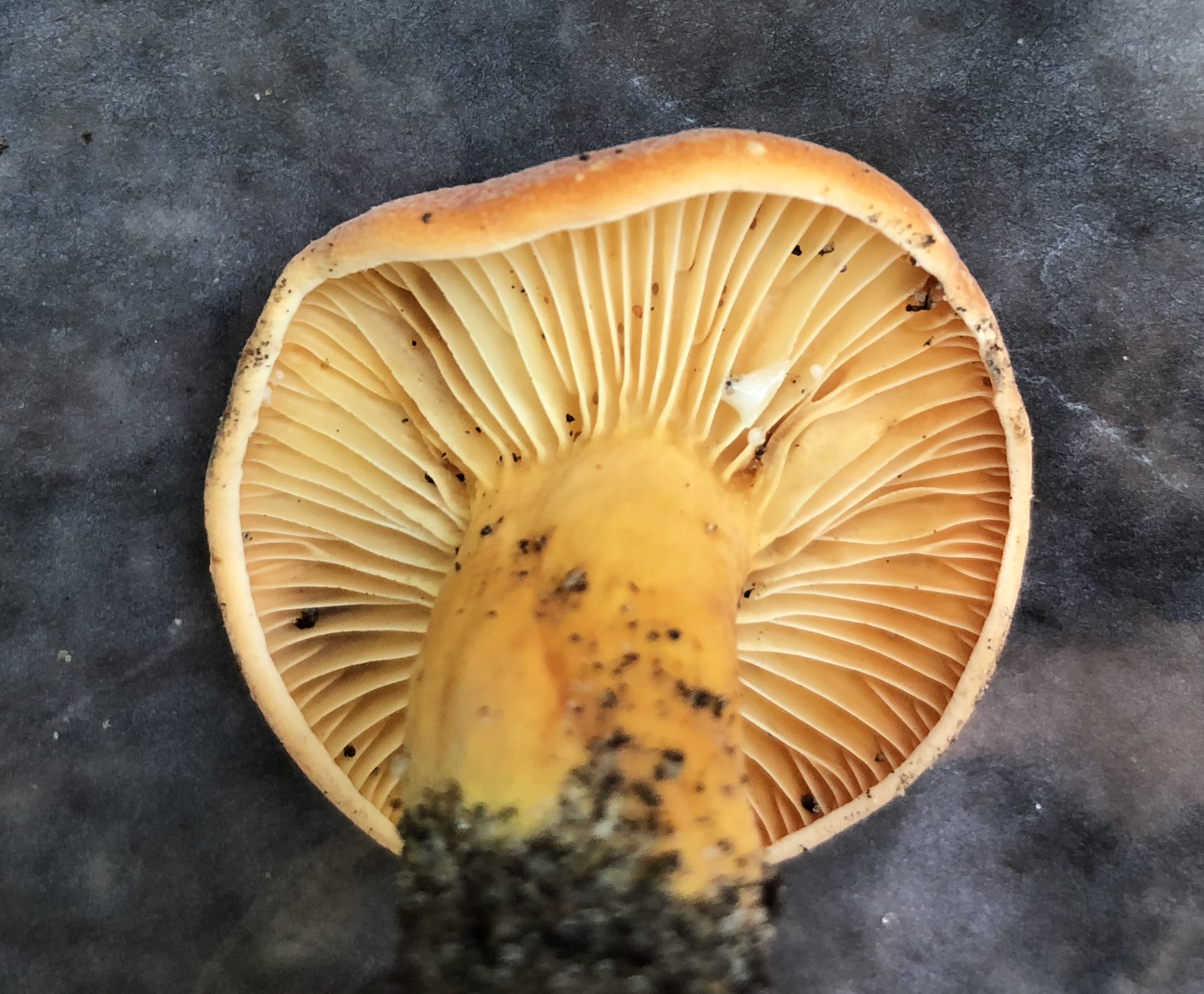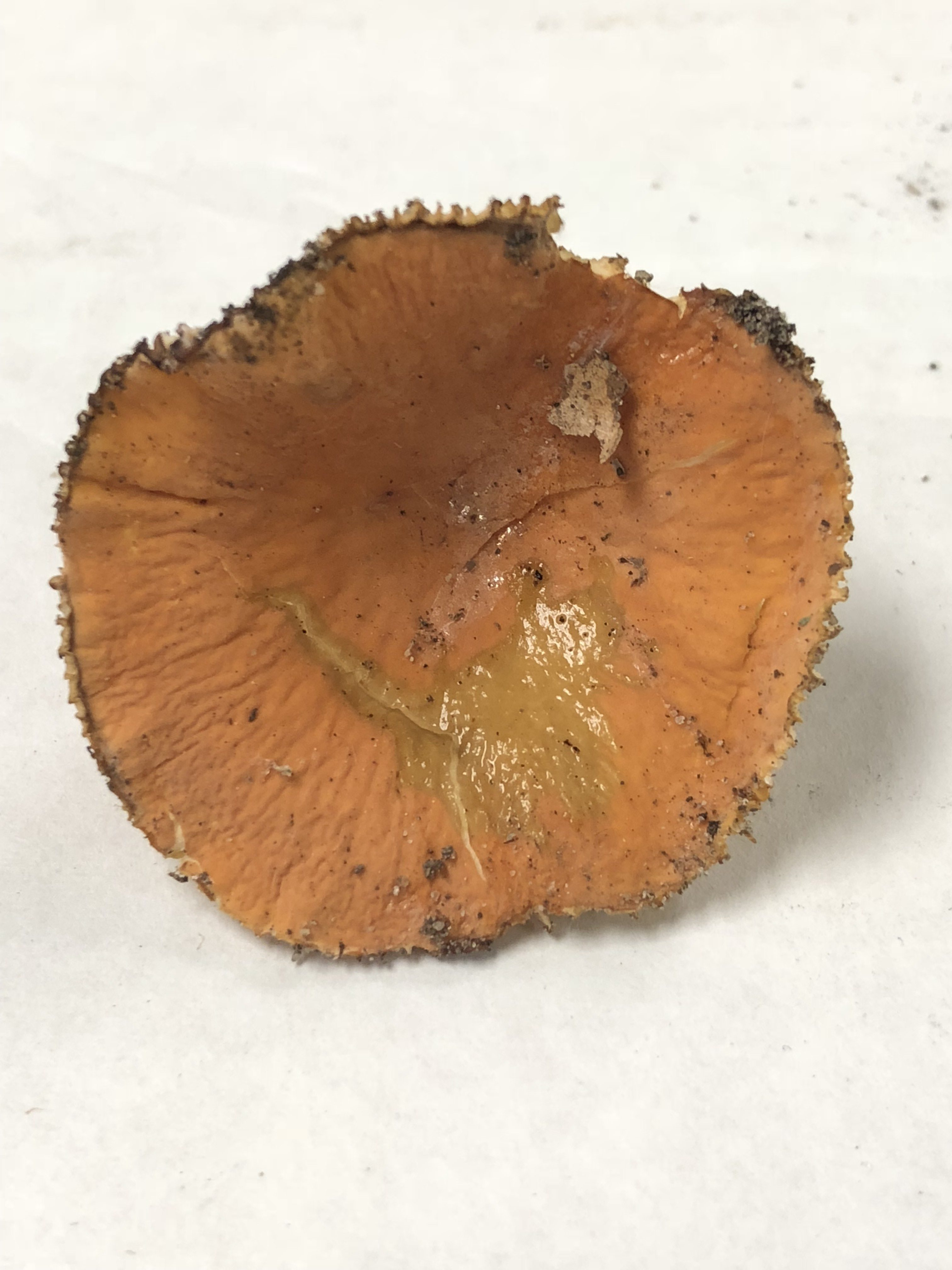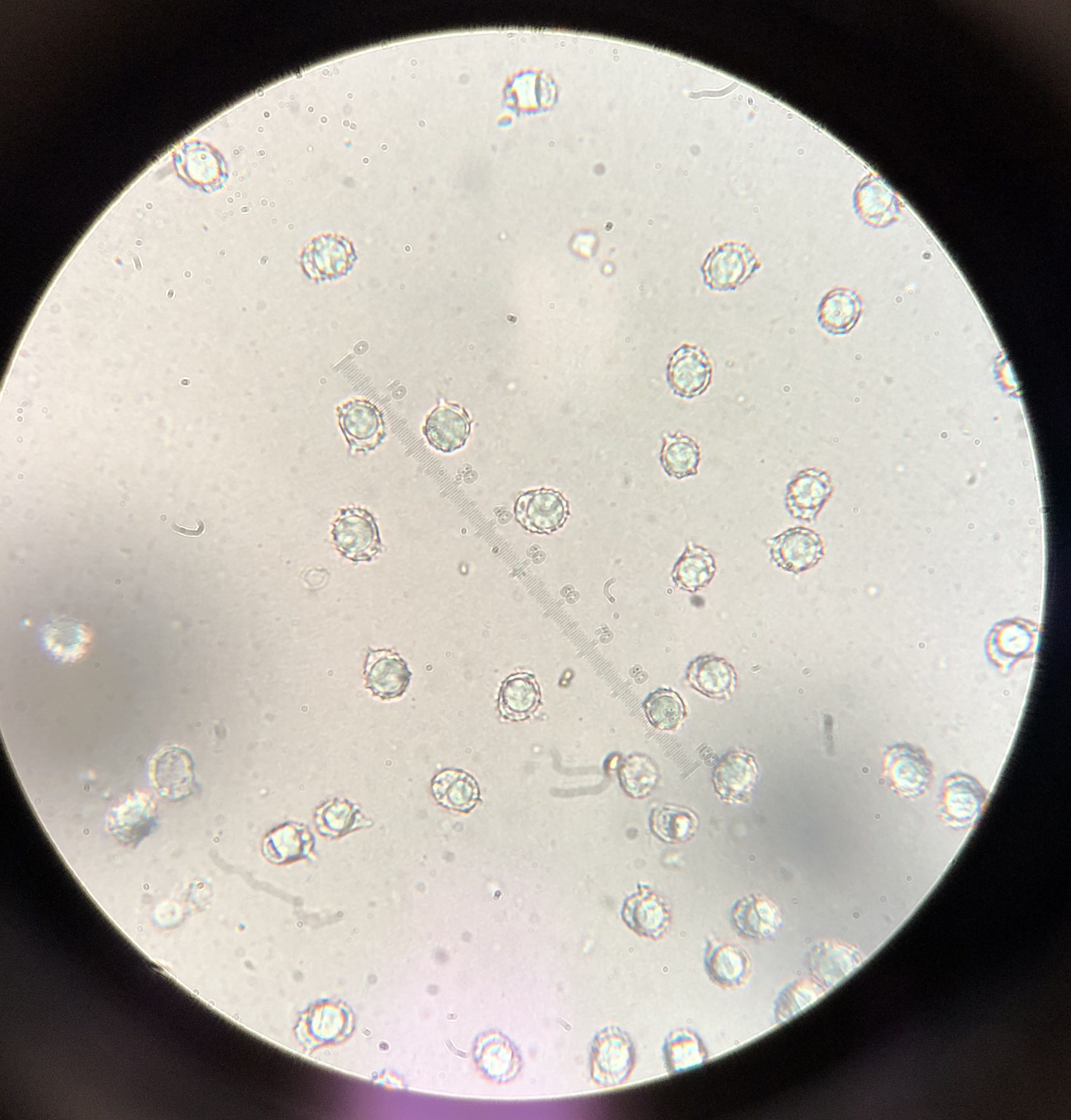Lactifluus Hygrophoroides
Formerly belonging to the Lactarius genus, this species was moved to Lactifluus subg. Lactifluus (autonymous) in 2012.

Lactifluus hygrophoroides (Berk. & M.A. Curtis) Kuntze
Formerly belonging to the Lactarius genus, this species was moved to Lactifluus subg. Lactifluus (autonymous) in 2012. L. hygrophoroides can be recognized via a velvety pale orange cap/stipe, white non-staining latex (as opposed to Lactarius volemus, which looks similar but stains brown), and spaced gills. The cap of this mushroom ranges from 3-10 cm, starting convex and flattening over time (Fig 1). When exposed to potassium hydroxide, the cap will stain pale olive (Fig. 3). The stipe is 3-5 cm long and 0.5-1.5 cm wide with coloring very similar to the cap. The gills are slightly decurrent and lighter than the cap/stipe, often entirely white. When damaged, a bright white latex is released, turning pale yellow over time (Fig. 2). The spores are white, elliptical, 7-9 x 5.5-7 µm, with ornamentation under 0.5 µm (Fig. 4). It is mycorrhizal with oaks (see oak leaves in Fig. 1), and can be found anywhere from Texas to eastern North America throughout the summer.



Taxonomy
- Basidiomycota
- Agaricomycotina
- Agaricomycetes
- Russulales
- Russulaceae
- Lactifluus
- hygrophoroides
- Basionym: Lactarius hygrophoroides
References:
- Kuo, M. (2011, February). Lactarius hygrophoroides. Retrieved from the MushroomExpert.Com.
- Kuo, M., & Methven, A. S. (2014). Mushrooms of the Midwest. University of Illinois Press.
- Verbeken, A., Van de Putte, K. and De Crop, E., 2012. New combinations in Lactifluus. 3. L. subgenera Lactifluus and Piperati. Mycotaxon, 120(1), pp.443-450.



 Print
Print Email
Email




